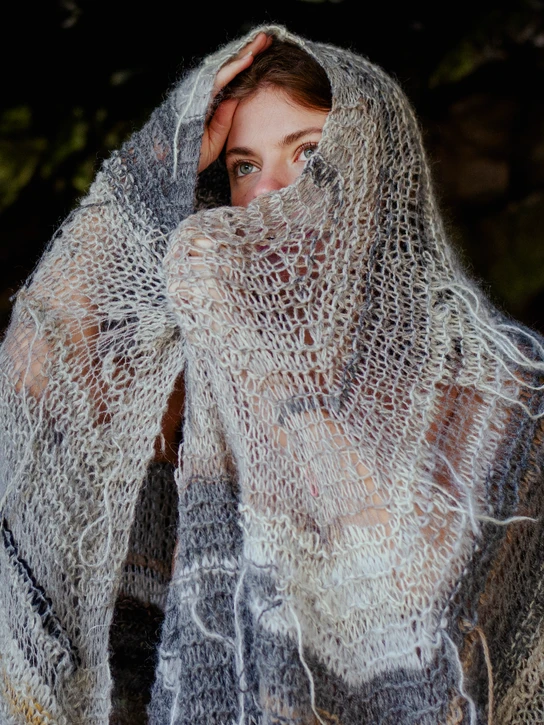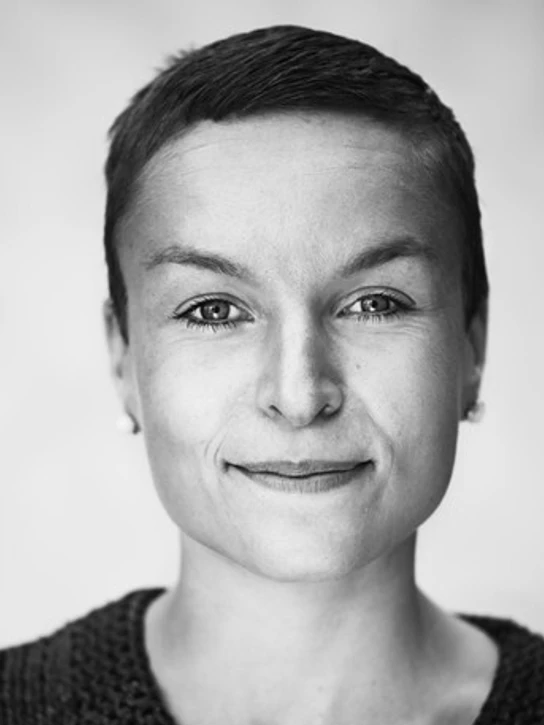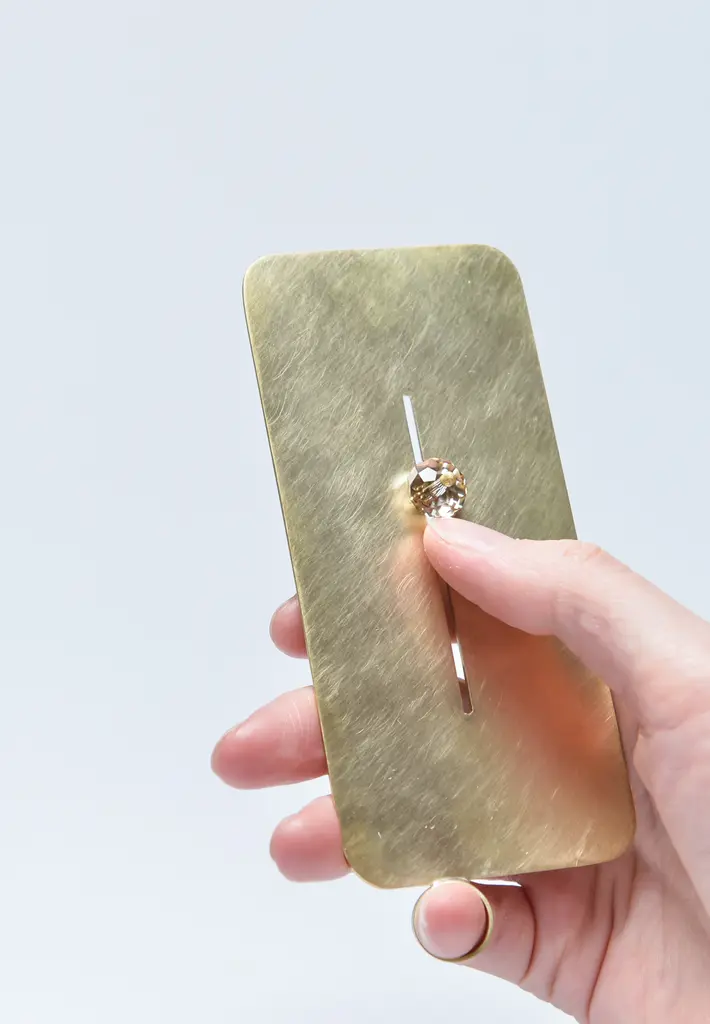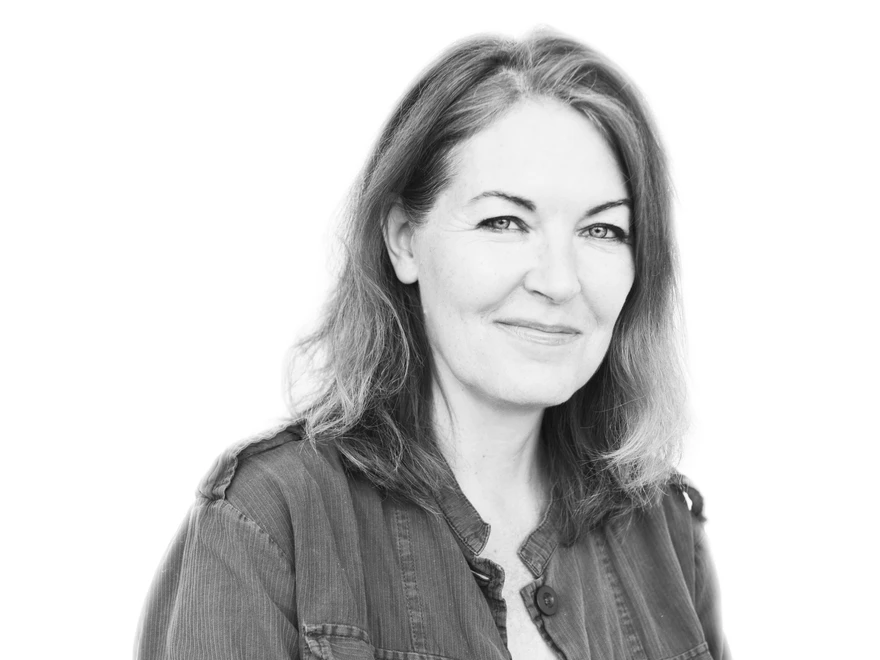Textile Design
- Semester start
- August / September
- Registration deadline
- (Quota 2) 15th of March at 12.00 PM (CET) / (Quota 1) 5th of July at 12.00 PM (CET)
- Duration
- 3 years (180 ECTS)
- Admission requirements
- Entrance examination
- Location
- Kolding School of Design
- Instruction language
- Danish
Why should I choose Textile Design?
As a textile designer you will design materials and surfaces, among other things, that we wear close to our body. It is therefore a basic requirement that you understand your user and the context in which the surface will be used and the emotional potential of your profession. It is not just a matter of creating something aesthetic. As a textile designer of the future you must be passionate about understanding and challenging today's systems, forms of production and consumption and about creating a more sustainable future.
You can see and download cirriculum and course descriptions via the links presented, but please note that they are only available in danish since the language of instruction for the bachelor degree program is danish.

“As a textile designer of the future you must be passionate about understanding and challenging today's systems, forms of production and consumption and about creating a more sustainable future.”
What will I learn?
The first year subjects focus on basic skills such as drawing, composition and application of colours. You will learn the basic techniques and methods, and an essential part of the training is learning to master both analogue and digital tools within the areas of knitting, weaving and printing. You will work with pattern development and surfaces, where composition, colours and material inform your design, e.g. through sketching directly in the materials.
You will build your collections based on sustainability and trend collection and learn to support your intuition and capture contemporary trends. Along the way you will gain a solid theoretical insight that will make you more aware in your work as a textile designer, and you will learn to work with design thinking, design methods and design analysis that will hone your process and your final product.

“Business collaborations will give you the opportunity to work under conditions and with issues that are real.”
Courses (Only avaliable in Danish)
Design som virkefelt
Introduktion til designstudiet og fagfeltets facetter, hvorved du opbygger en begyndende faglig selvforståelse.
Tekstil praksis og metode
Kurset giver dig en grundlæggende introduktion til tekstildesignerens praksis, og de faktorer der har indflydelse på udviklingen af et tekstilt design. På kurset introduceres til skitseringsmetoder til fremstilling af tekstile konstruktioner i strik og væv, udvikling af ornamentik til trykte tekstiler, samt fremstilling af et farvearkiv.
Form
Introduktion til og træning i færdigheder inden for rumlig skitsering, komposition samt formanalyse og formudvikling. Forløbet afsluttes med et mindre formudviklingsforløb, hvor du afprøver dine færdigheder i en designfaglig kontekst
Visualisering
Kurset introducerer til visualiserings- og skitseringsteknikker og har som formål, at du oparbejder en fortrolighed med at skitsere og kommunikere visuelt.
Ornamentik og rapportering
Formålet med kurset er, at du får viden og erfaring med at udvikle mønstre til print på tekstiler: herunder ideudvikling, skitseringsmetoder komposition, rapportering, ornamentik, skalering, farvesætning, visualisering i kontekst. Kurset foregår i en vekselvirkning mellem analoge og primært digitale redskaber.
Design som virkefelt
Introduktion til designstudiet og fagfeltets facetter, hvorved du opbygger en begyndende faglig selvforståelse.
Farve
Introduktion til farvens kompleksitet og betydning for et design, herunder indflydelse af lys, materiale og form, historisk farvelære, æstetik, optræning af færdigheder inden for analog og digital farve samt udvikling af et individuelt farvekoncept.
Visualisering
Kurset introducerer til visualiserings- og skitseringsteknikker og har som formål, at du oparbejder en fortrolighed med at skitsere og kommunikere visuelt.
Tekstile teknikker og redskaber
Kurset er centreret omkring værkstedsorienterede workshops, som introducerer dig til fagets analoge redskaber i væv, tryk og strik. Vi arbejder eksperimenterende med materialer og konstruktioner med det mål at udvikle en serie sammenhængende tekstiler med afsæt i eget designoplæg og designintention.
Førsteårsprøvens projektperiode
Selvformuleret projekt der bygger på indsigter og læring fra det første studieårs undervisning. Projektet indgår som et element i førsteårsprøven.
Koncept og digitale redskaber
Med afsæt i egne koncept boards, opnår du erfaring med at arbejde eksperimentere med udvikling af en serie tekstiler fremstillet på digitale redskaber i tryk, væv og strik. Kurset giver indsigt og forståelse for tekstile fibres fremstilling og egenskaber med fokus på at kunne reflektere over materialevalg og bæredygtige udfordringer.
Designproces og metode
Fokus er på designprocessen og designmetoder, herunder brugerinddragende elementer. Gennemførelse, udførelse og refleksion over processen samt udvalgte anvendte metoder analyseres og vurderes i en skriftlig rapport med afsæt i projektet.
Tekstiler til rum
I kurset arbejder du med at fremstille individuelle serier/kollektioner målrettet en interiørkontekst. På kurset opnås erfaring med at kunne bygge og eksperimentere i en rumlig model samt udvikle en atmosfære målrettet en kontekst. På kurset samarbejder du med en udvalgt interiørtekstil-virksomhed og får forståelse for dennes marked, forretningsgrundlag og produktionsvilkår.
Materialestrategi CMF
På kurset introduceres du til CMF Design (Colour, Materials, Finish) som professionel designfaglig rolle. På kurset opnås viden om og erfaring i at udvikle egne materialestrategier målrettet interiør eller produktkontekst.
Smart Textiles
På kurset introduceres du til feltet generelt og til fiberinnovationer, som kan anvendes til fremstilling af Smart Textiles. På kurset udvikler du egne koncepter og scenarier for potentialer i udvikling/anvendelse af tekstiler, der kan reagere på deres omgivende miljø.
Materialedrevet design og facilitering
På kurset introduceres du til metoder til udvikling af Material Driven Design. I MDD arbejde designeren som udforskende med afsæt i en valgt materiel ressource. Gennem research og en materialeeksperimenterende tilgang undersøges potentielle muligheder for at skabe nye materialer med et bæredygtighedsfokus.
Design for Change
Kurset introducerer dig til udfordringer i nutidens tekstil- og modeindustri. I kurset udvikles fremtidsscenarier med henblik på at skabe innovative nye systemer, produkter og designpraksisser – med potentiale til at ændre designerens indflydelse på branchen i en mere ansvarlig retning.
Brand, produkt og kommunikation
Med afsæt et specifikt brand vil du sammen med et tværfagligt designteam arbejde med bæredygtige strategier, virksomhedsanalyse med fokus på brugere, brandidentitet og produktionsmetoder, og på denne baggrund designe en visionær kollektion, der præsenteres for virksomheden.
Faglig position
Kurset introducerer til modeller til analyse af forretningsmodel, med fokus på værdiskabelse for aftagere og samarbejdspartnere. I forløbet vil du kortlægge egne designkompetencer, din faglige profil og identificere hvilken specialisering du ønsker at styrke, for at bringe dig nærmere dine mål for fremtiden.
One Step Closer
Dette kursus tager afsæt i dit ønske omkring videre specialisering, formuleret i kurset Faglig position. På baggrund af dette ønske, udvikles et eget designprojekt, der hjælper dig med at komme tættere på at opnå ambitionerne for dit fremtidige professionelle virke som designer.
BA-projekt
På baggrund af din samlede viden samt kompetencer og færdigheder rammesætter du et projekt baseret på dit individuelle interessefelt med fokus på dit ønske om specialisering og din fremtidige professionelle karriere.
“You will learn to work with global and local issues across cultural and professional differences.”
Learning through making is a core part of the Kolding School of Design approach and the education hosts 20 studios

What is the best way to learn?
You will work individually and in groups; you will have the opportunity to work across disciplines but also immerse yourself in your particular area of study. The programme is divided into periods of 3 -10 weeks, consisting of lectures, regular team instruction and 1:1 guidance. Instruction will be provided by our permanent faculty, experienced instructors as well as external teachers who hail from industry and provide invaluable insight from practice.
During the 4th semester we go on a study trip abroad to learn about production and about the most important competencies a designer needs.
You will also have the opportunity to spend time at a design school abroad, which offers topics of special interest to you.
The programme will conclude with a Bachelor project in collaboration with a company.
“You learn to work independently, in teams and on projects with your own and shared design assignments.”


What jobs can I get?
You can use the strength of the textile designer in an overall role as a colour /material designer. You can work with colour schemes for room colours and surfaces, or explore technical and performance textiles. You can focus on trend and idea development or focus on developing sustainable textiles and brand new fibres and materials.
There is a plethora of job opportunities depending on your specialisation and your passion.

Do you dream of becoming a designer?
Take the first step and apply for admission. The deadline is 15th of March at 12.00 PM for quota 2 applicants and 5th of July at 12.00 PM for quota 1 applicants.
Interested in studying a Bachelors Degree in Accessory Design?

